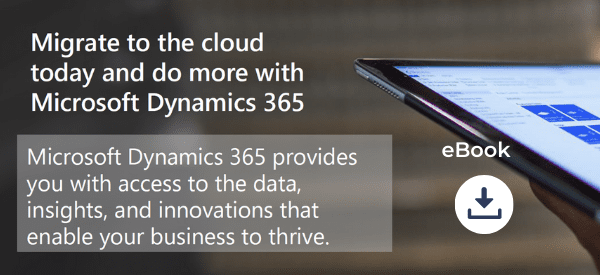
A Key Performance Indicator (KPI) is a measurable value that demonstrates how effectively a company is achieving key business objectives, and it's used in AX 2012 R3. Organizations use KPIs to evaluate their success at reaching goals. KPIs and Business Intelligence are preconfigured in AX 2012 R3 and include a selection of pre-built Business Intelligence (BI) solutions; the BI tools consist of:
- Dashboards that include more than 24 predefined role centers for the various users within the organization.
- Analysis cubes or analytics for 19 analysis SSAS cubes to provide access to finance, supply chain, manufacturing, professional services, and business process data access. These cubes include KPIs from demand forecasting, general ledger, accounts payable, and accounts receivable to workflows.
- Analytic reports used for measuring KPIs.
Creating Your Own KPI Tools for ERP
While Dynamics AX works hard at configuring businesses' most used processes, it may be necessary to define your own KPIs. Reasons for doing so include:
- Improving performance
- Increasing productivity
- Making relevant, timely decisions
Another way AX users can create KPIs is to use the Business Intelligence Development Studio or Excel PowerPivot. Regardless of the method used, moving newly created KPIs along with the calculated measures to Dynamics AX as soon as possible not only allows you to make the most of your ERP system, but also ensures that all KPIs will be preserved by Microsoft SQL Server during future updates.
At Clients First, we work hard for you so no additional training is needed. Our implementation specialists really take the time to explain how Dynamics AX works and why. Over and over, we hear from our clients how pleased they are by our value-added pedagogical approach to implementations.
In case you need a refresher or didn’t implement with us, please find a short tutorial below on how to Add a New Web Part and Configure KPIs below.
Naturally as your business develops, or if your business already has existing KPI and reports, this progression will require you to cater your reports to provide data in a quick and easy to digest format. Custom formatting and custom data will become key to support this process.
To find out more about the unique combination of services offered by our team and Microsoft Dynamics, call our demo team at 800.331.8382, or email sales@clientsfirst-tx.com. Clients First Texas is a Dynamics AX and NAV Partner ranked in the top 1% of VARS located in Dallas-Fort Worth with 6 other locations nationwide.
Come back in a few weeks for a blog on BI in AX7. We can hardly wait for that exciting release.
Adding A New Web Part (See configure KPIs below)
To Add a New Web Part
- In Enterprise Portal, browse to the page that you want to add a new web part.
- In the ribbon, display the Page tab.
- Click the Edit Page command.
- In the section where you want to create the new Web part, click Add a Web Part.
- In the Categories list, select the category of web part that you want to add. The web parts that are specific to Enterprise Portal are found in the Microsoft Dynamics AX category.
- In the Web Parts list, select the web part type that you want to add to the page.
- Verify the Add Web Part to: setting to make sure that the web part is being added to the correct section of the page.
- Click Add. The web part will be added at the top of the section. If necessary, move the web part to the appropriate location in the section by dragging it where you want it.
- In the menu for the web part, click Edit Web Part. The properties and settings for the web part will be displayed.
- Make changes to the settings. The settings for each Microsoft Dynamics AX web part type can be found in Web Part Types, which contains a description of each web part type.
- Click Apply to have the changes applied to the web part.
- Click OK to save the changes and close the list of properties.
- Save the changes to the page by clicking Stop Editing in the Page tab.
- If you will be distributing the web part modifications to other Enterprise Portal installations, import the updated page into the AOT.
Configure the KPI List Web Part
To configure the KPI List web part to display KPIs, follow these steps.
- In the web part, click Add KPIs. The Business Overview add KPI form is displayed.
- From the Cube list, select the cube that contains the KPI that you want to display.
- From the KPI list, select the KPI to display.
- From the Display value as list, select whether to display the KPI value as a monetary amount or a number. Then specify which colors represent positive and negative values.
- In the Display name field, enter a name for the KPI. This name is displayed to users. If you do not enter a name in this field, the name in the KPI field is displayed to users.
- Select the Visible check box to display the KPI in the web part.
- Select the Apply filters check box to enter filters, if you require them. You can filter KPIs by relative dates or actual values. You can also apply multiple filters.
Filtering by relative dates or actual values – Suppose that you have selected to display your organization’s sales total. If you want to filter this KPI by a relative date, you could choose to display the sales total for last year, last month, or last quarter. If you want to filter this KPI by an actual value, you could choose to display the sales total for a specific time period such as Month = May.
Applying multiple filters – Suppose that you have selected to display your organization’s sales total. You can apply multiple filters to this KPI so that the sales that meet the following criteria are displayed:
Salesperson Name=Nancy Phillippi
Month=May
- Select the Split check box to display the individual elements that make up the whole KPI.
For example, suppose that you have selected to display your organization’s sales total. To split the sales total by salesperson, follow these steps:
-
-
- Select the Split check box.
- From the Split by list, select the salesperson, or worker dimension.
- From the Attribute list, select an attribute, such as salesperson name.
- From the Show list, select whether to display all salespeople, the salespeople who have the highest sales totals, or the salespeople who have the lowest sales totals.
- Select the Hide values of zero check box to hide the names of salespeople who made no sales.
-
Link to Microsoft Dynamics AX – Select this option if you want the hyperlink to open Microsoft Dynamics AX menu items. Then select the menu items in the Desktop Link and Enterprise Portal Link lists.
- When you view the KPI in the Microsoft Dynamics AX client, the hyperlink will open the menu item that is specified in the Desktop Link field. When you view the KPI in Enterprise Portal, the hyperlink will open the menu item that is specified in the Enterprise Portal Link field.
o Link to URL – Select this option if you want the hyperlink to open a URL. Then enter the URL.
- Click OK to close the form and save your changes.
- To add another KPI to the web part, repeat steps 1 through 10.
- To rename the web part, follow these steps:
 Quick Tips and Tutorials on KPI and Business Intelligence in AX">
Quick Tips and Tutorials on KPI and Business Intelligence in AX">
